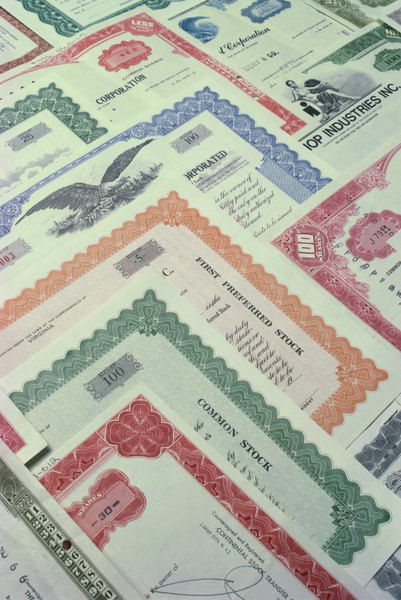SEC Yield Vs. Yield to Maturity
All bonds have a yield, but you can measure the yield in different ways.
Jupiterimages/Photos.com/Getty Images
When you buy bonds, you invest in a loan of money to a company or a government. The bond pays interest until the day it matures, when the loan money is returned, in full, to the party holding the bond. You can sell the bond in the meantime, or simply collect regular interest payments. For most bonds, that means every six months. You measure the income from the bond by its yield -- the percentage of your investment that is returned to you every year in the form of interest payments. In the modern world of finance and investments, nothing is simple, however, and there are at least two useful ways to measure yield.
Tip
The tip should also summarize this topic.
Defining Investment Yield
Yield means the percentage of your investment that you earn every year through interest payments. If you buy a bond for $1,000, and earn $60 in interest, the yield is 6 percent. All bonds carry a fixed interest rate, but since they trade on an open market, their price varies with supply, demand and the general direction of interest rates. As a result, the yield varies as well.
Understanding SEC Yield
To help investors get a clear picture of the yield they actually get when buying into a bond mutual fund, the Securities and Exchange Commission set out a standard method of measuring the fund's total return. You get SEC yield by adding dividend and interest payments, and subtracting out fees and expenses, over the previous 30 days on an annualized basis. Divide the result by the total value of the fund (the number of shares times the fund price) and you get SEC yield, also known in the bond-fund business as the 30-day yield. This is the best measure of what a bond fund is returning to investors, who can use SEC yield to easily compare one bond fund to another.
Yield to Maturity
The yield-to-maturity number measures the annual return of a single bond if you hold it until it matures. Since bond prices fluctuate, this number will be different from the current yield -- unless the market price is the same as the bond's face amount). A $1,000 bond paying 6 percent interest may trade tomorrow for $1,020; as a result, the current yield falls to 5.73 percent (the interest payments have declined as a percentage of the price).
Yield-to-maturity figures in the gradual return of the bond to its face amount, $1,000, as it approaches maturity. If you hold the bond, you'll be repaid $1,000 on maturity. But if you trade bonds in search of capital gains, you're not much interested in yield-to-maturity.
Funds and Individual Bonds
SEC and yield-to-maturity figures serve very different purposes. Bond mutual funds list their SEC yield to give investors an idea of the total return that they're currently receiving, taking into consideration everything that affects the total value of the portfolio. Yield-to-maturity allows you to figure out how much you'll earn if you buy an individual bond at its market price and hold it for the stream of interest payments.
References
Writer Bio
Founder/president of the innovative reference publisher The Archive LLC, Tom Streissguth has been a self-employed business owner, independent bookseller and freelance author in the school/library market. Holding a bachelor's degree from Yale, Streissguth has published more than 100 works of history, biography, current affairs and geography for young readers.

